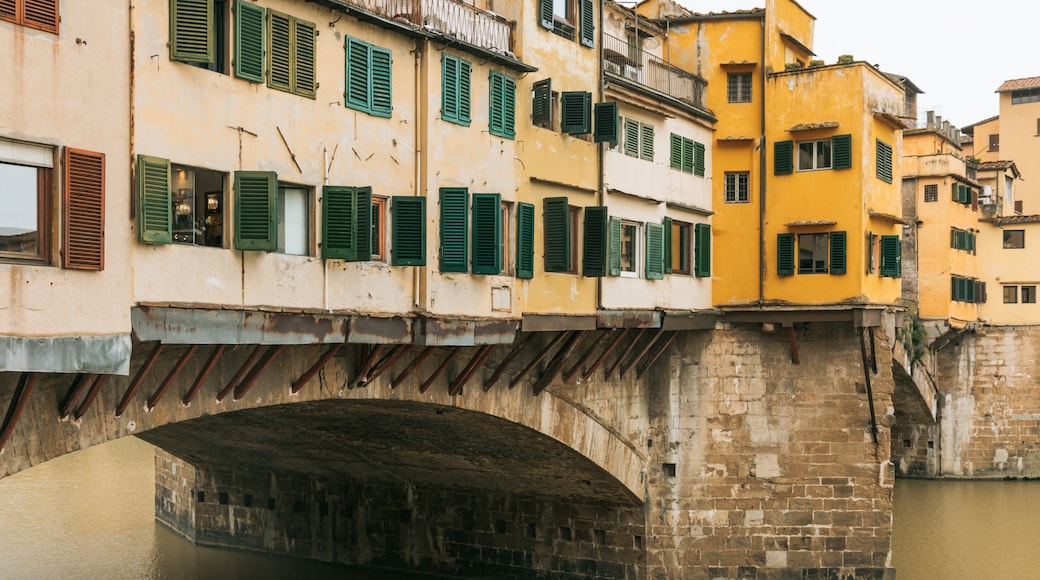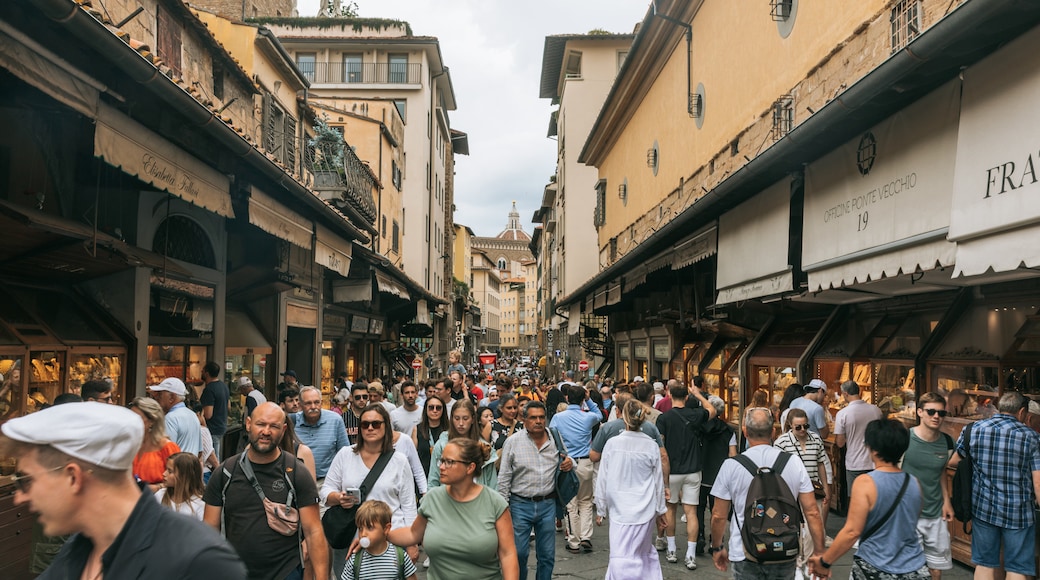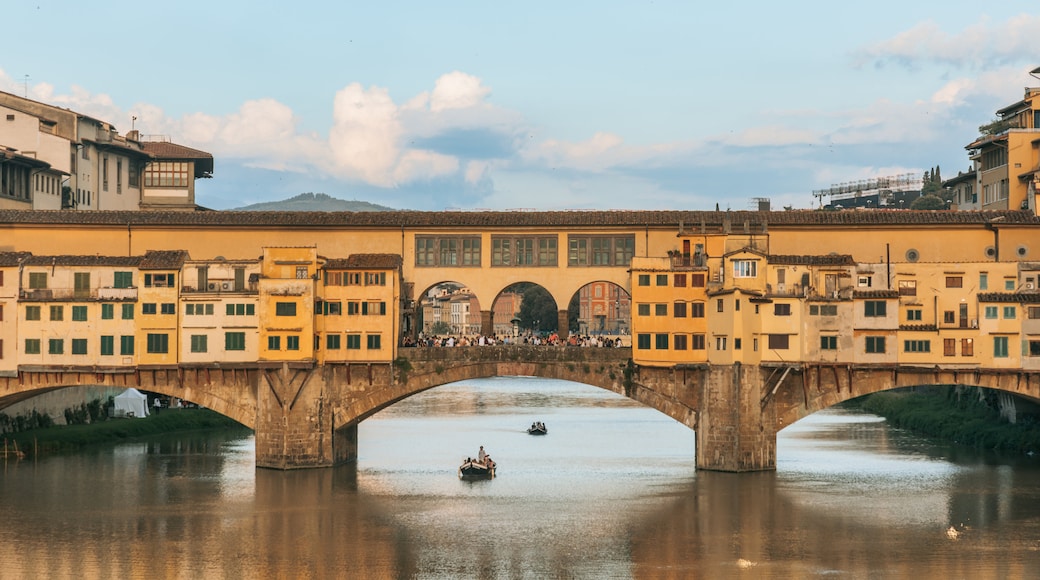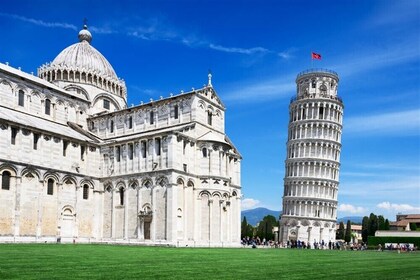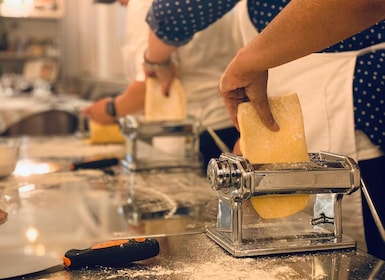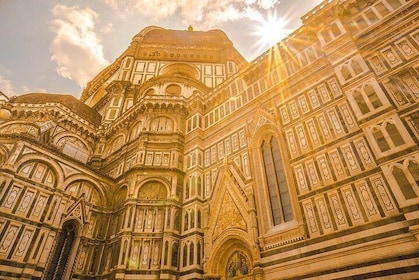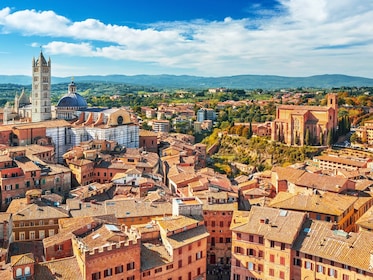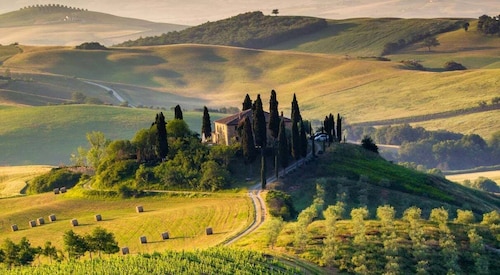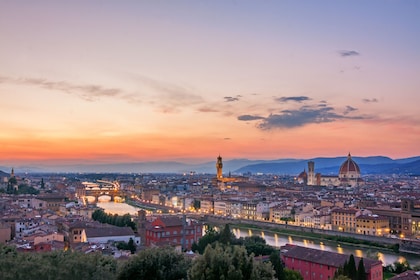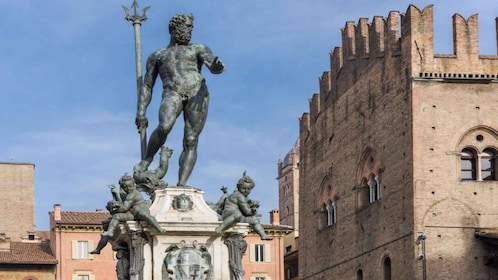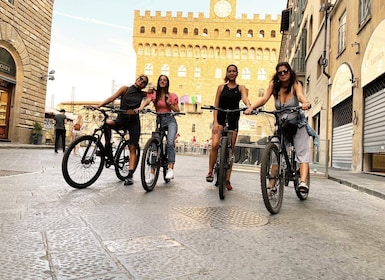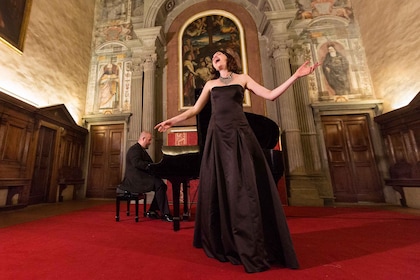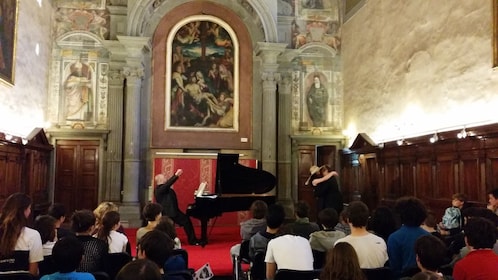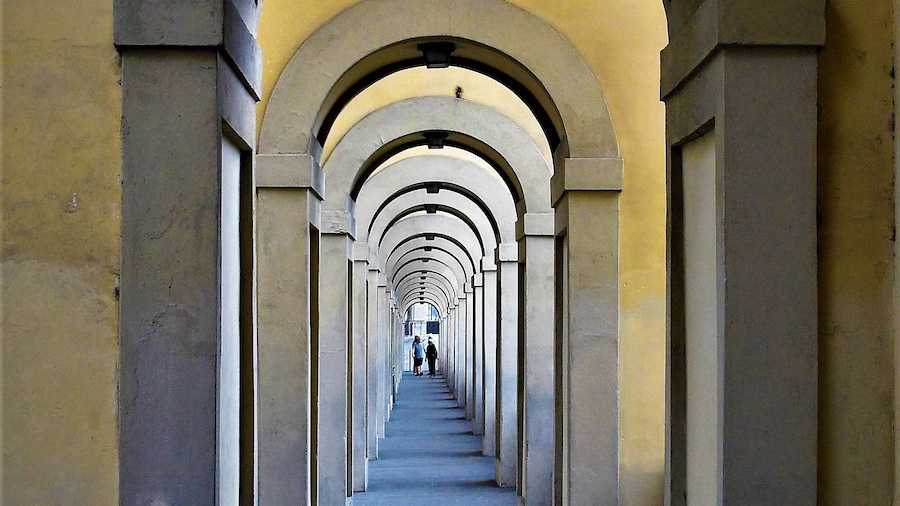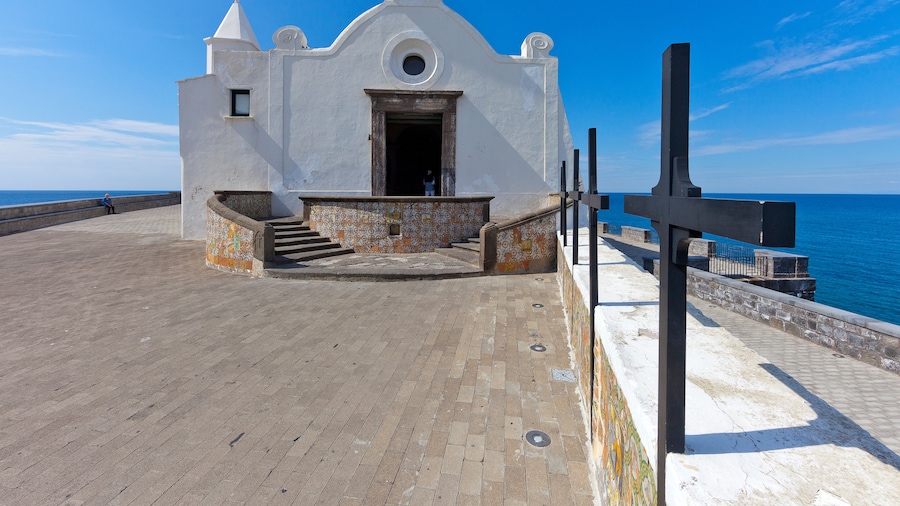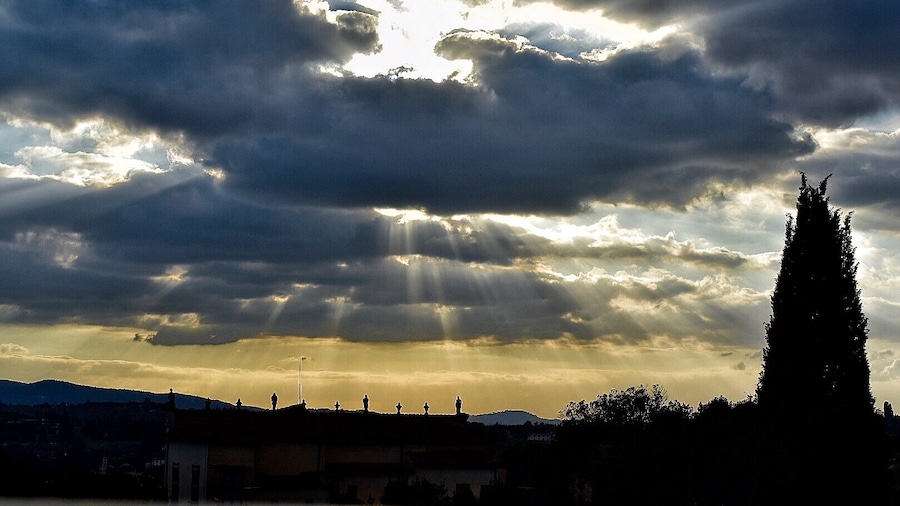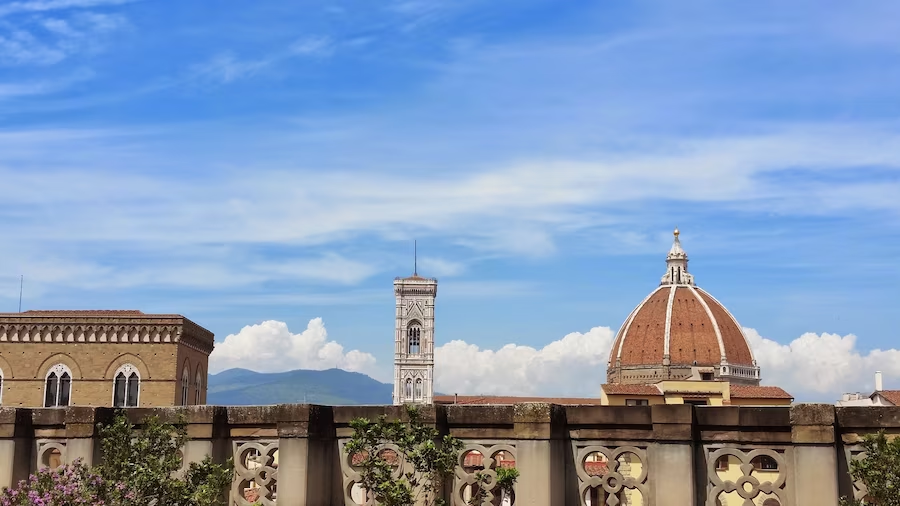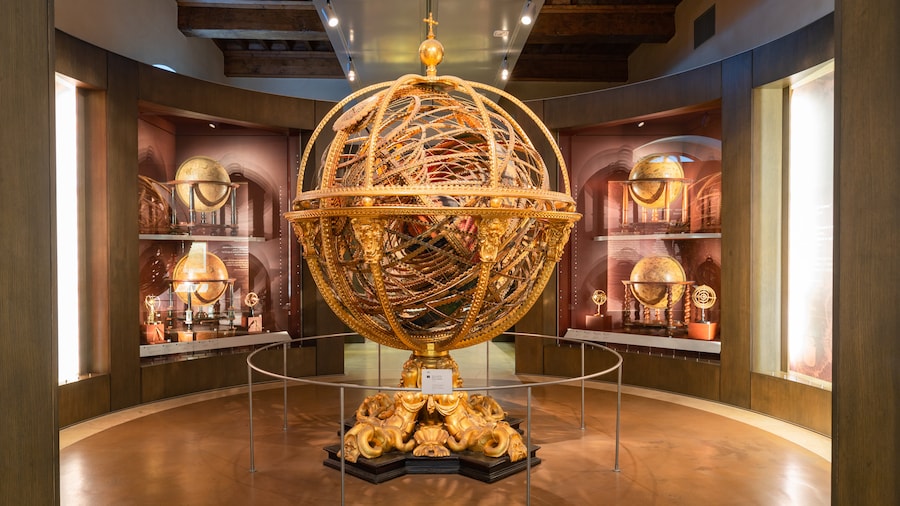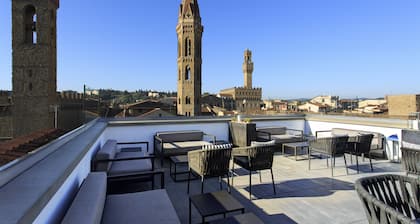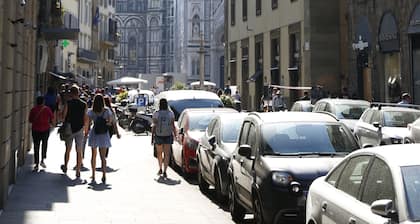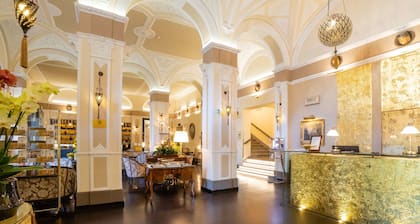As you make your way over the Ponte Vecchio, peer into the windows of the goldsmith stores that have been here since the 16th century. Enjoy a sweeping view down the banks of the Arno from the viewing balconies in the center of the bridge. Street performers, artists and tourists create a lively atmosphere during the day. When the shutters come down over the shops in the evenings, the bridge takes on a romantic ambiance, perfect for a romantic stroll.
Ponte Vecchio (Old Bridge) is Florence’s oldest bridge. Records of a bridge in this location go back as far as 996, although the bridge you see today was constructed in 1345. Three wide arches span the river. The bright yellow stores and their rows of small, square windows reflect on the water to provide one of Florence’s most iconic images. This was the only bridge not blown up by the Germans as they retreated through Florence in World War II. Legend has it that this was a direct order from Hitler.
As you walk along the bridge stop at one of the many jewelry stores, where goods range from priceless antiques to more affordable souvenirs. Goldsmiths have been here since 1593, when Ferdinand I ordered that the butchers and greengrocers leave due to the unpleasant smell they created. Find the stern, bearded bust of the famous goldsmith Cellini at the halfway point on the bridge, with stunning views down the Arno behind him.
Look up and you’ll notice the Vasari Corridor (Corridoio Vasariano). The Grand Duke Cosimo I ordered the construction of the corridor by Vasari in 1565 so he could walk undisturbed from the town hall (Palazzo Vecchio) to his residence in the Palazzo Pitti.
A local legend states that lovers who attach a padlock to the bridge and toss the key into the river will be eternally bonded. You may well see padlocks attached to various parts of the bridge, but don’t be tempted to try it yourself. Damage caused by vast numbers of padlocks has led authorities to award a hefty fine to anyone caught doing it.
The bridge is accessible all hours of the day.

